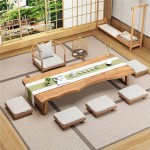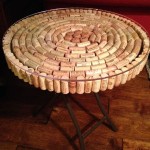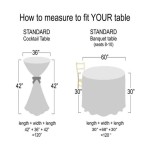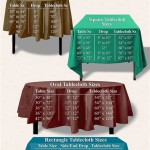The Enduring Appeal of Old Antique Table Lamps
Old antique table lamps possess a captivating allure, extending beyond their primary function of illumination. They represent tangible links to the past, embodying the artistry, craftsmanship, and design sensibilities of bygone eras. These objects, often family heirlooms or treasures discovered in antique shops, transcend mere decorative items; they tell stories of previous owners, historical movements, and evolving aesthetic preferences. Their value lies not only in their monetary worth but also in their intrinsic beauty and historical significance. Collecting, restoring, or simply appreciating antique table lamps requires an understanding of their diverse styles, materials, and historical contexts.
Defining precisely what constitutes an "antique" table lamp can be somewhat subjective. Generally, an object is considered an antique if it is at least 100 years old. Therefore, lamps manufactured before the 1920s would typically fall under this classification. However, the term is sometimes used more loosely to describe lamps manufactured in earlier-to-mid 20th century styles that exhibit qualities reminiscent of older designs. Furthermore, the lamp's overall condition, rarity, and provenance—its documented history of ownership—also play significant roles in determining its antique status and value.
The appeal of antique table lamps stems from their unique characteristics, often hand-crafted details, and the enduring quality of materials used in their construction. Before mass production became commonplace, lamps were frequently made by skilled artisans, incorporating techniques and design elements that are rarely replicated in modern mass-produced lighting. These lamps offer a sense of individuality and character that cannot be easily found in contemporary lighting options.
Key Point 1: Identifying and Dating Antique Table Lamps
The process of identifying and dating antique table lamps involves a multi-faceted approach, combining careful observation with research. Several factors contribute to the determination of a lamp's age and origin. These include examining the lamp's style, materials, construction techniques, and any identifying marks or signatures. Understanding the historical context of lamp design can also be invaluable in this process.
Style: Different historical periods produced distinct lamp styles. For example, Art Nouveau lamps, popular from the late 19th century to the early 20th century, are characterized by their flowing, organic forms, often incorporating floral and natural motifs. Art Deco lamps, prevalent in the 1920s and 1930s, exhibit geometric shapes, bold colors, and luxurious materials like chrome and Bakelite. Victorian era lamps, dating from the mid-to-late 19th century, frequently feature ornate detailing, elaborate embellishments, and a focus on opulence. Recognizing these stylistic distinctions is a crucial first step in dating a lamp.
Materials: The materials used in the construction of antique table lamps can provide important clues about their age and origin. Common materials include brass, bronze, cast iron, glass (including stained glass and art glass), ceramic, and wood. The presence of certain materials, such as early forms of plastic like celluloid or Bakelite, can help narrow down the lamp's production period. Examining the quality and craftsmanship of the materials is also crucial. Hand-blown glass, for instance, will have subtle variations and imperfections that are not present in mass-produced glass.
Construction Techniques: The way a lamp was constructed can also reveal its age and authenticity. Early lamps were often assembled using techniques that are no longer common, such as hand-soldering or the use of specific types of screws and fasteners. The presence of hand-applied finishes, such as patinas or gilding, can also indicate an older lamp. Examining the lamp's wiring and electrical components is also important. Original wiring may be cloth-covered and will likely show signs of wear and tear. Replacing the wiring with modern components is generally recommended for safety reasons, but the original wiring should be carefully documented or preserved if possible.
Marks and Signatures: Many antique table lamps bear marks or signatures that can help identify the manufacturer or designer. These marks may be located on the base, the shade, or the electrical components. Researching these marks can provide valuable information about the lamp's origin and date of manufacture. Reference books and online databases dedicated to antique lighting can be helpful in this process. However, it is important to note that not all antique lamps are marked, and the absence of a mark does not necessarily preclude a lamp from being authentic.
Historical Context: Understanding the historical context of lamp design can also be helpful in dating and identifying antique table lamps. Researching the social, economic, and technological factors that influenced lamp production during different periods can provide valuable insights. For example, the development of electric lighting in the late 19th century led to a significant shift in lamp design, with manufacturers adapting existing gas and oil lamp designs to accommodate electric bulbs. Understanding this transition can help in distinguishing between pre-electric and early electric lamps.
Key Point 2: Common Styles and Types of Antique Table Lamps
The world of antique table lamps encompasses a wide array of styles and types, each reflecting the aesthetic preferences and technological advancements of its era. Familiarizing oneself with these different styles is essential for both collectors and those simply seeking to appreciate the beauty and history of these objects. Some of the most common and sought-after styles include Victorian, Art Nouveau, Art Deco, and Mid-Century Modern.
Victorian Lamps: Victorian lamps (approximately 1837-1901) are characterized by their elaborate ornamentation, often featuring intricate metalwork, colorful glass shades, and floral or figural motifs. Materials such as brass, bronze, and porcelain were commonly used. These lamps often reflect the Victorian era's emphasis on opulence and grandeur. Common features include oil-burning lamps converted to electricity, featuring decorative fonts and burners, and table lamps with stained glass shades, such as those produced by Tiffany Studios (although authentic Tiffany lamps are extremely valuable and rare, many imitations exist).
Art Nouveau Lamps: Art Nouveau lamps (approximately 1890-1910) embrace organic forms, flowing lines, and natural themes. They often feature stylized representations of flowers, plants, and insects. Favrile glass, known for its iridescent finish, was a popular material used in Art Nouveau lamp shades. Designers like Émile Gallé and the Daum brothers were prominent figures in the Art Nouveau movement, and their lamps are highly collectible. The use of whiplash curves and asymmetrical designs are hallmarks of the style.
Art Deco Lamps: Art Deco lamps (approximately 1920-1939) embody geometric shapes, streamlined designs, and a sense of modern elegance. They often incorporate materials such as chrome, Bakelite, and exotic woods. Art Deco lamps reflect the era's enthusiasm for technology, speed, and progress. Popular motifs include zigzags, chevrons, and stylized sunbursts. Many Art Deco lamps feature stepped bases and shades, emphasizing their geometric forms. Norman Bel Geddes and Walter Dorwin Teague were influential designers in the Art Deco movement.
Mid-Century Modern Lamps: Mid-Century Modern lamps (approximately 1945-1965) are characterized by their clean lines, simple forms, and functional designs. They often incorporate materials such as wood, metal, and fiberglass. Mid-Century Modern lamps reflect the era's emphasis on practicality and affordability. Popular designers include George Nelson, Isamu Noguchi, and Greta Grossman. These lamps often feature minimalist designs, eschewing elaborate ornamentation in favor of simple elegance.
Beyond these prominent styles, other types of antique table lamps exist, including those reflecting the Arts and Crafts movement (emphasizing handcrafted quality and natural materials), Federal style (characterized by neoclassical motifs and elegant simplicity), and various regional and folk art traditions. Each style offers a unique perspective on the history of lighting design.
Key Point 3: Caring for and Restoring Antique Table Lamps
Proper care and restoration are essential for preserving the value and beauty of antique table lamps. Antique lamps often require careful cleaning, repair, and rewiring to ensure their safety and functionality. Neglecting these aspects can lead to further damage and a decrease in the lamp's overall value.
Cleaning: The first step in caring for an antique table lamp is gentle cleaning. Dust and dirt can accumulate over time, obscuring the lamp's details and potentially damaging its finish. Use a soft, dry cloth to remove loose dust and debris. For more stubborn dirt, a slightly damp cloth can be used, but avoid using harsh chemicals or abrasive cleaners, as these can damage the lamp's surface. For metal components, specialized metal polishes can be used to remove tarnish and restore shine, but always test the polish on an inconspicuous area first. For glass shades, use a mild soap and water solution to remove dirt and grime. Avoid immersing glass shades in water, as this can damage any painted or applied decorations.
Repair: Antique table lamps may require repair due to damage or wear and tear. Cracked glass can be repaired by a professional glass restorer. Loose joints can be re-glued or re-soldered. Broken or missing parts can sometimes be replaced with salvaged parts from other antique lamps. However, it is important to use replacement parts that are appropriate for the lamp's age and style. Avoid using modern replacement parts that will detract from the lamp's authenticity.
Rewiring: One of the most important aspects of restoring an antique table lamp is rewiring. Original wiring in antique lamps is often deteriorated and poses a safety hazard. Rewiring should be performed by a qualified electrician who specializes in antique lighting. The electrician should use appropriate wiring and electrical components that are suitable for the lamp's voltage and wattage. The wiring should be concealed as much as possible to maintain the lamp's original appearance. It is also important to install a new socket and plug that meet current safety standards.
Restoration Ethics: When restoring an antique table lamp, it is important to strike a balance between preserving its original character and ensuring its functionality. Avoid making irreversible alterations to the lamp, such as stripping off original finishes or replacing original parts with modern reproductions. The goal of restoration should be to conserve the lamp's historical integrity while making it safe and usable. Documenting the restoration process, including any repairs or replacements, is also important for preserving the lamp's provenance.
Maintaining meticulous records of any restoration work performed on an antique table lamp is vital for preserving its historical value and documenting its transformation. These records should include detailed descriptions of the condition of the lamp before restoration, the specific repairs and replacements made, and the materials and techniques used in the process. Photographs documenting each stage of the restoration can further enhance the record. This documentation is not only valuable for the lamp's current owner but also for future owners, providing a clear understanding of the lamp's history and its evolution over time. It can also increase the lamp’s value and appeal to collectors.

31 H 1 Light 3 Way Table Lamp Antique Old Broe Pleated Shade

Vintage Lamp Light Table Desk Decor Fl Antique Lamps Lighting Glass Decorative Old

Vintage Lamp Antique Table Bedroom Decor Lighting Amber Glass Old Lamps Light With Shade Israel

Vintage Austrian Crystal Table Lamp For In Ct Middlebury Furniture And Home Design

Craft Looks Led Antique Table Lamps For Home Decoration At Rs 4000 In Moradabad

Vintage Lamps Table Lamp Antique Lighting Bedroom Desk Accent Old

Craft Led Antique Table Lamps For Home At Rs 3000 In Moradabad Id 13674873488

A Beginner S Guide To Antique Lamps

Whole Fl Printed Cloth Art Cover With Glass Pendant Antique Table Lamps Светильники

Lamp Table Vintage Lighting Antique Brass Bedroom Light Lamps Desk Old Norway








